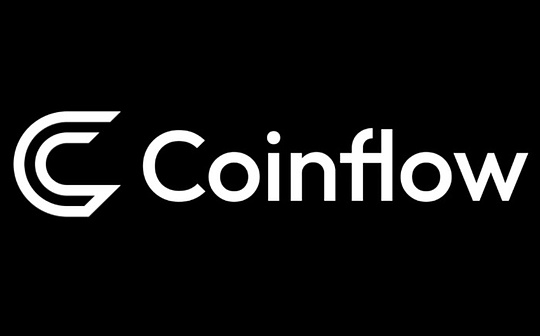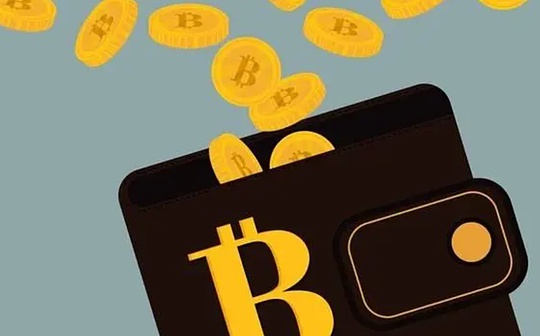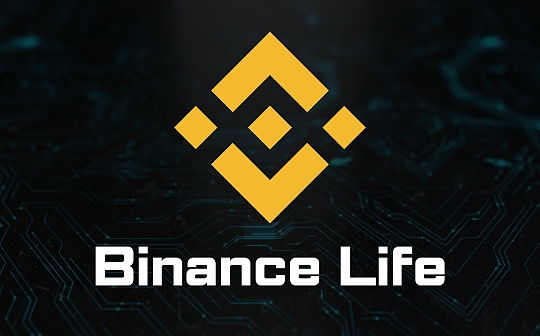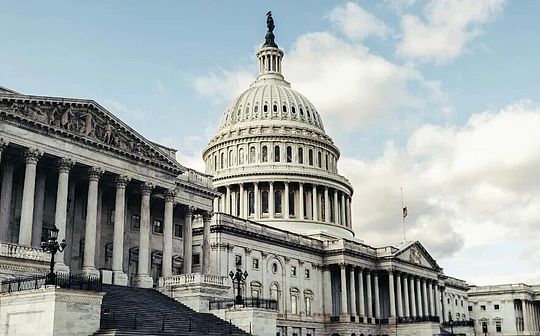
Author: Shigeru, CGV Research
Introduction:Stablecoins have proven crypto’s “payment value,” while prediction markets are trying to prove “information value.”Within the circle, the trading volume of platforms such as Polymarket and Kalshi has soared, becoming one of the tracks closest to real-world applications; but outside the circle, it is still regarded as gambling and it is difficult to gain mainstream recognition.This article will analyze the current status, path of breaking out of the market and future trends of the prediction market, and explore whether it can become the next cornerstone connecting encryption and reality after stablecoins.
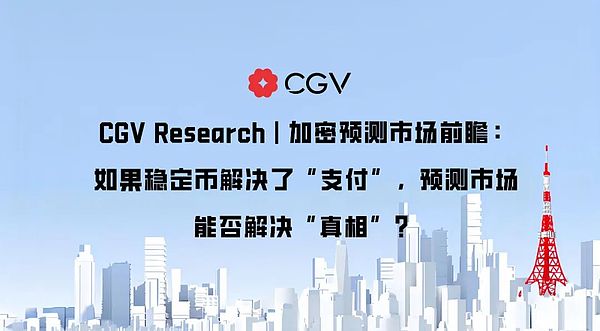
In the past two years, the prediction market has become the most controversial but also the most potential “real-world application” in the encryption industry: within the circle, it has outperformed leading platforms such as Polymarket and Kalshi, and its trading volume has increased rapidly; outside the circle, it is still regarded as gambling, and it is difficult to enter the asset allocation vision of mainstream investors.
However, the question also arises – can the prediction market, like stablecoins, truly break through the circle and become the next cornerstone of the connection between the encryption industry and the real world?Become the next Internet-level financial technology product?
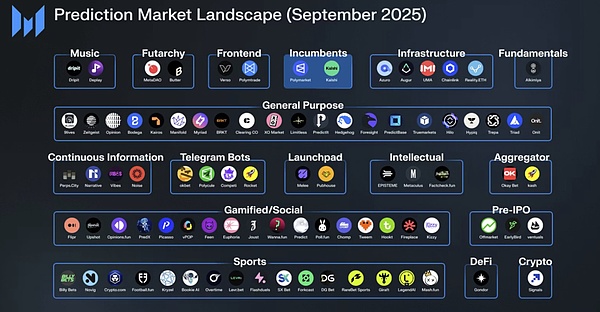
Crypto prediction market ecosystem (Messari)
Analysis of the current situation: prosperity within the circle and cognitive gap outside the circle
Why is the same market so popular in the crypto circle, but so few outside the circle?The prediction market is a typical case of “hot inside and cold outside”.
On the one hand, the popularity in the circle continues to heat up.
Platforms represented by Polymarket, Kalshi, and Manifold have established relatively stable traffic and narratives in the crypto community.
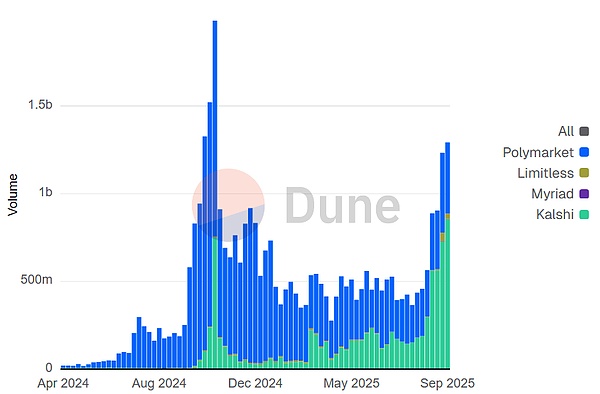
Statistics on crypto prediction market share (Dune, 2025.10.06)
PolymarketWith its simple interface and USD stablecoin settlement method, it has become an important place to discuss events such as the US election, macroeconomic data, and crypto industry airdrops.In 2025, Polymarket’s cumulative trading volume has exceeded $7.5 billion, with August trading volume exceeding $618 million, driven mainly by political events and macro forecasts.During the 2024 US election, Polymarket set Trump’s victory rate at 99% at 1:30 a.m. Eastern time, while Fox News did not announce the results until 1:47 a.m., and other media delayed it for a long time.Continuous arbitrage and the rising marginal cost of moving prices away from fair value make prediction market errors short-lived and easy to correct.
ManifoldThe “social + prediction” light entertainment model has attracted more than 200,000 users to participate, becoming a “new voting pool” for community users to obtain information and express their opinions.However, Manifold’s daily active users fell to an all-time low of 886 in 2025, reflecting user retention challenges.
also,KalshiEmerging as a compliance platform, transaction volume reached US$1.3 billion in September 2025, accounting for 62.2% of global prediction market activity, and dominating the market in sports event predictions.
On the other hand, awareness outside the circle is still insufficient.
The general public often directly equates prediction markets with “gambling” and lacks understanding of its value in “information aggregation” and “probability pricing”.Even when mainstream media in the United States began to occasionally cite Polymarket data as a reference, the social awareness of prediction markets still remained at the level of a “niche toy”.
For example, a 2025 Economist magazine report noted that low liquidity issues make it difficult for large investors to participate, limiting the credibility of the market.The lack of compliance labels and authoritative endorsements makes it difficult to enter the cognitive framework of mainstream users.Although Kalshi recorded $208 million in trading volume during the March 2025 March Madness event, the public still views it as a gambling rather than an information tool.
Cross-circle expansion strategy: multi-dimensional integration and innovation path
If the prediction market really wants to break out of the circle, it will need not only technological upgrades, but also finding new narratives and entrances.Politics, macroeconomics, entertainment and sports, and even the native Web3 ecosystem are all potential flashpoints.
1. Anchoring real-life events: traffic portal for politics, economy and entertainment
The prediction market naturally has a strong correlation with real-life events, and sectors such as politics, economy, entertainment and sports are the best entry points for it to break through the circle.
political events:The U.S. general election, the British Brexit referendum, and the probability of passing bills are all events that are difficult to accurately predict with traditional polls.Due to its pricing mechanism, prediction markets can often provide indicators that are more real-time and closer to real probabilities.For example, the market for the Federal Reserve’s interest rate decision in 2025 on Polymarket has a trading volume of more than $50 million, and users realize risk hedging by betting on the probability of “raising interest rates by 25 basis points.”
Macroeconomics:Sensitive events in financial markets such as CPI announcement, non-farm employment data, and the Federal Reserve’s interest rate decision are the focus of attention of institutions and investors.Prediction markets can become a real-time expression of “market expectations.”During the 2025 yen carry trade unwind, oracle-based prediction markets predicted a 15% depreciation of the yen weeks in advance, while the stock market was slower to react.
Entertainment and Sports:The Oscars, World Cup, Olympic Games, etc. have attracted national attention and can naturally attract a large number of outside users to the prediction market platform.For example, in the prediction market for the engagement of Taylor Swift and Travis Kelce on Kalshi in 2025, a trader bought the contract for $0.37 and ultimately made a profit of $50,000, triggering widespread media coverage and driving an influx of users in the entertainment industry.
2. Media and public opinion collaboration: transformation from data sources to authoritative indicators
For prediction markets to break through the circle, they must become a cited data source.
poll alternatives:In the United States, some media have begun to use Polymarket’s prices as a supplement or even a substitute for polling.Unlike traditional polls that rely on questionnaires, the price of the prediction market reflects “real money bets” and therefore has more signaling value.In 2025, Yale Insights reported that citations of political prediction markets were rising, but cautioned that their accuracy should be cautious.
Live Probability Indicator:If news reports can cite real-time data from the prediction market, such as “The market shows a 72% probability that the Federal Reserve will raise interest rates in September,” it will greatly enhance the authority and dissemination power of the prediction market.For example, when covering March Madness in 2025, Barron’s magazine directly cited Kalshi data as an indicator of event expectations.
3. Deep integration of Web3 ecology: derivatives and social closed loop
DeFi integration:Prediction markets can become part of on-chain derivatives, providing users with risk hedging tools.For example, hedging against uncertain events such as interest rates, policies, and even token listings.In 2025, the integration of Polymarket and DeFi platforms helped users achieve on-chain hedging in the Bitcoin price prediction market, with trading volume reaching $430 million.
SocialFi linkage:KOL can initiate prediction contracts, allowing fans to directly participate, and form a cycle of revenue and traffic.Emerging platform Melee raised $3.5 million in 2025 to launch a “viral prediction market” that allows the creation of social prediction events without barriers.
RWA binding:The prediction market is close to derivatives in nature, and it is entirely possible to be combined with RWA (real world asset) derivatives in the future to become an alternative trading tool on the chain.Kalshi’s attempt to integrate with RWA in 2025 has pushed its trading volume past Polymarket for three consecutive weeks.
Tokenization of private companies:Tokenization of private companies is difficult to implement, including founder resistance, legal risks, false “governance” rights, lack of liquidity, etc., while prediction markets can more easily meet similar needs.By creating markets on company events (such as the probability of funding success), users can indirectly speculate on private assets without the complexity of tokenization.
4. Upgrading of technical experience: user-friendliness and lowering the threshold
AMM+NFTization:The automatic market-making mechanism and NFT share-based design make it more intuitive for users to “buy an idea” and lower the threshold for understanding.Manifold’s NFT-based share predicts that it will attract new users in 2025, but overall activity still needs to increase.
Lightweight entrance:Through Telegram Bot, WeChat applet and other forms, participation in the prediction market is as simple as “initiating a vote”, which helps users outside the circle to quickly enter.Polymarket’s mobile optimization drives 20% user growth by 2025.
Analysis of development bottlenecks: three major obstacles: supervision, flow and narrative
Every outlet cannot get around the bottleneck.The question about prediction markets is not “whether it has value”, but “whether it can be sustained.”Regulation, liquidity and narrative are the three thresholds that lie ahead.
1. Regulatory gray area: the boundary game between gambling and derivatives
Prediction markets lie in the twilight zone between gambling and financial derivatives.In the United States, the CFTC’s approval of Kalshi has set a precedent, but most platforms are still operating in a gray area.In September 2025, the CFTC cleared Polymarket to return to the U.S. market, but Commissioner Kristin Johnson warned of insufficient regulatory guardrails and a lack of visibility into the market.
Although Hong Kong, Singapore and other places have potential regulatory windows, they currently lack clear policies.Regulatory uncertainty limits the ability of prediction markets to attract institutional users.For example, PrizePicks obtained NFA FCM registration in 2025, opening a compliant prediction market, but the industry as a whole still faces legal challenges and may appeal to the Supreme Court.
2. Liquidity shortcomings: lack of capital pool size and network effects
Most prediction market capital pools are concentrated on a few popular events, and the long-tail market lacks liquidity, resulting in prices lacking reference significance.If it cannot attract larger-scale capital inflows, it will be difficult for the prediction market to form a “network effect” of information aggregation.
The 2025 report shows that low liquidity results in unmet demand for large hedging, impacting accuracy.For example, Manifold’s long-tail market has less than 1,000 active users, making it difficult to support complex forecasts.
3. Narrative cognitive bias: the problem of transition from “gambling” to “information market”
The public’s inherent impression of prediction markets is still that of “gambling” rather than “a probabilistic information market.”Without the endorsement of authoritative institutions, this narrative will be difficult to reverse quickly.Media reports in 2025 emphasized that although the trading volume of the prediction market has surged, the lack of supervision has led to a lack of public trust.
Future trend outlook: mainstream integration and long-term value positioning
Stablecoins solve the payment problem, and the next thing that can prove the true value of encryption may be the prediction market.It may not be now, but the direction is clear.
To achieve true cross-circuit communication, prediction markets must transcend encrypted user self-circulation and embed into broader narratives.
Media digitization: Becoming a real-time expected indicator in reporting
Prediction markets need to become a common probability indicator in news reports, so that the public gradually accepts market prices as “collective expectations.”In 2025, KPMG reports that the popularity of prediction markets continues to rise, with media citations increasing by 30% year-on-year.In the future, Polymarket and Kalshi data will continue to appear in mainstream news and financial programs.Journalists reporting on elections, macroeconomics, or sporting events must refer to the probabilities given by prediction markets if they want to maintain credibility.
Regulatory evolution: Compliance opens the door to institutional funds
The CFTC’s technical upgrade and feedback mechanism are expected to be completed by October 2025. Polymarket’s return to the U.S. market and Kalshi’s victory in the regulatory game all mean that the prediction market will have a clearer path in terms of event contract listings, clearing methods, and institutional capital participation.This is not only a symbol of “legalization”, but will also become a prerequisite for institutional funds to enter.
Institutionalization of liquidity: the influx of professional capital and trading teams
As supervision gradually becomes clearer, professional funds will be the first to enter the market.From the launch of a pure prediction market fund with a management scale of tens of millions of dollars, to the establishment of a dedicated prediction market trading department by quantitative institutions (not only market making, but also directional trading), this trend has begun to appear.SIG’s provision of market-making services to Kalshi is a clear precedent.
Product Financialization: Derivatives and Terminalization of Prediction Markets
The final form of the prediction market is likely to evolve into a new derivatives exchange.Experts predict that the global forecast market may reach US$1 trillion by 2030.At the same time, prediction market data will gradually be integrated with professional terminals such as Bloomberg and Refinitiv, with real-time market conditions, historical records, reminder functions, chart display, and support for native APIs of Excel/Python and news editing systems.Until then, editors and traders will work directly with probabilistic data for prediction markets in the same way they work with stock price, interest rate, and exchange rate data.
In summary, the real value of the prediction market is not only to allow people to place bets, but also to allow information to have a price.Stablecoins have proven the real value of “payment”, and the next thing to be verified may be “information pricing”.
The prediction market is where it is today, just like the stablecoin market in its early days.Whoever can understand its potential will be able to stand on the next industry cornerstone in advance.


